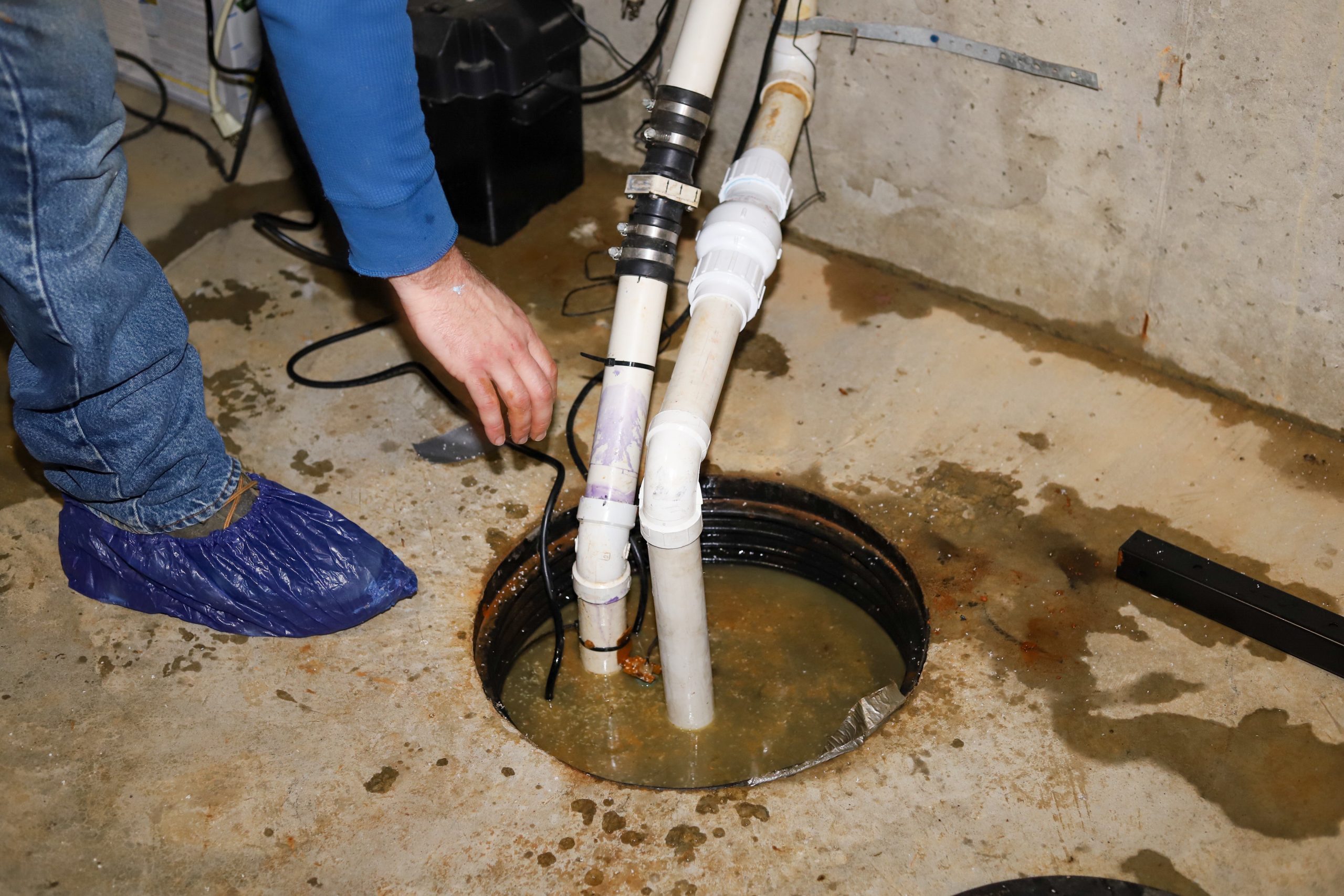How do you actually feel in regards to Cleaning & Maintenance Tips for Your Home's Sump Pump?

Sump pumps are crucial parts in lots of homes, particularly in locations prone to flooding or too much wetness. They help stop water damage by successfully eliminating excess water from basements or crawl spaces. Nonetheless, like any other home appliance, sump pumps require routine maintenance to guarantee they function effectively when needed the most. Cleaning your sump pump is an important part of its maintenance, and comprehending how to do it appropriately can save you from pricey repairs and possible disasters.
Introduction
Keeping a tidy sump pump is vital for its appropriate performance and longevity. Ignoring this essential task can lead to blockages, breakdowns, and ultimately, water damages to your home. Consequently, learning just how to clean up a sump pump is important for homeowners who depend on these gadgets to maintain their basements completely dry and secured.
Understanding the Sump Pump
Prior to diving right into the cleansing procedure, it's vital to have a standard understanding of just how a sump pump works. Usually set up in a pit or basin listed below the cellar floor, a sump pump contains a number of vital parts, including a pump, a float button, and a discharge pipe. When water accumulates in the pit, the float switch triggers the pump, which then pumps the water out via the discharge pipeline, far from the building's foundation.
Indications of a Dirty Sump Pump
Recognizing when your sump pump requires cleaning is essential for stopping prospective breakdowns. Some typical indications that show a filthy sump pump include unusual sounds throughout operation, reduced water circulation, and visible particles in the pit. If you notice any of these symptoms, it's important to clean your sump pump without delay to prevent any kind of further concerns.
Preparing for Cleaning
Prior to you begin cleansing your sump pump, it's necessary to take some security preventative measures. Begin by turning off the power to the pump to prevent any kind of electrical accidents. Furthermore, put on proper protective equipment, such as handwear covers and goggles, to secure yourself from dust, particles, and potential microorganisms.
Step-by-step Overview to Cleaning a Sump Pump
Shutting down the Power
Begin by disconnecting the power supply to the sump pump to prevent any type of mishaps while cleansing.
Getting Rid Of Particles and Dust
Utilize a container or a scoop to remove any kind of noticeable particles, dirt, or sediment from the sump pit. Dispose of the particles properly to avoid it from blocking the pump or the discharge pipeline.
Cleansing the Pump and Drift Switch Over
As soon as the pit is free from debris, thoroughly get rid of the pump from the pit. Check the pump and the float switch for any indicators of damage or wear. Make use of a soft brush or cloth to clean the surfaces and get rid of any type of accumulated gunk.
Flushing the System
After cleaning the pump and float switch, purge the sump pit with clean water to remove any continuing to be dust or sediment. This will aid make sure that the pump runs smoothly and successfully.
Looking For Appropriate Functioning
Prior to reinstalling the pump, carry out a quick examination to make certain that the float button turns on the pump correctly. Pour some water right into the sump pit and observe the pump's operation. If every little thing is working properly, you can reassemble the pump and reconnect the power supply.
Maintenance Tips to Maintain Your Sump Pump Clean
In addition to periodic cleaning, there are several upkeep tips you can comply with to keep your sump pump in optimum condition:
- Routine Inspection: Inspect your sump pump regularly for any indicators of wear, damage, or blockages.
- Maintaining the Surrounding Location Clean: Guarantee that the area around the sump pit is devoid of debris, dirt, and blockages.
- Examining the Pump Regularly: Evaluate your sump pump regularly by putting water right into the pit and observing its procedure. This will certainly help you recognize any prospective problems prior to they rise.
Conclusion
Cleansing your sump pump is a crucial facet of its maintenance and ensures that it runs successfully when you need it one of the most. By following the actions laid out in this overview and including regular maintenance into your routine, you can prolong the lifespan of your sump pump and safeguard your home from water damages.
6 STEPS ON HOW TO CLEAN A SUMP PUMP PROPERLY
UNDERSTANDING SUMP PUMPS
Your sump pump plays a crucial role in protecting your home by managing and removing excess water. It primarily functions as a “shield”, guarding your basement against the damaging effects of water accumulation. The pump is housed in a sump pit in the lowest part of your basement, and its job is to pump out any water that collects there.
During heavy rainfalls or when snow melts rapidly, water can infiltrate your basement, posing potential risks like flooding, structural damage, and harmful mold growth. Here, the sump pump springs into action, pumping out the intruding water and directing it away from your home.
SAFETY FIRST
Before cleaning, remember to prioritize safety. Disconnect the sump pump from the power source to prevent any accidental electric shocks. Also, wear sturdy gloves to protect your hands from any sharp or dirty components within the pump.
REMOVE THE SUMP PUMP
After ensuring your safety, the next step is to remove the sump pump from its pit. Doing this might require careful maneuvering as you don’t want to damage any pump components. Once removed, clean the sump pit to remove any accumulated debris or sludge.
INSPECT THE PUMP
Inspect the pump for any visible signs of wear or damage. Check the power cord, float switch, and impeller housing. If any components look worn out or damaged, consider replacing them to ensure optimal performance.
CLEAN THE PUMP
Thoroughly clean the pump with warm, soapy water. Make sure to rid it of any dirt, gravel, or other debris that might impede its performance. You can use a toothbrush to clean the small, hard-to-reach parts of the pump.
REINSTALL THE SUMP PUMP
- Reinstall the pump into the sump pit
- Make sure it’s positioned correctly to remove the water effectively
- Once it’s back in place, reconnect it to the power source
TEST THE PUMP
Finally, pour some water into the pit to ensure the pump works correctly. It should start automatically and begin pumping out the water; if it doesn’t, check the power source and the positioning of the pump.
Remember, while cleaning your sump pump is an essential part of home maintenance, hiring a professional plumber for a thorough inspection and cleaning at least once a year is also important. This will ensure that your pump is in optimal condition, ready to protect your home from potential water damage.
BEST PRACTICES FOR CLEANING SUMP PUMP DISCHARGE PIPES
- Regular Inspection: Regularly inspect your discharge pipes, especially during heavy rainfall or snowmelt periods. Look for any signs of blockage or damage. Early detection of problems can prevent serious issues down the line.
- Periodic Cleaning: Over time, sediment and debris can accumulate in the discharge pipes, impeding the flow of water. Regular cleaning helps keep the pipes clear and functioning efficiently. You can use a high-pressure water jet to effectively clean the pipes.
- Insulation During Winter: In colder climates, discharge pipes can freeze, blocking the outflow of water. Protect your discharge pipes from freezing temperatures by insulating them with foam pipe insulation. This will ensure the sump pump can continue to discharge water even in freezing conditions.
- Proper Positioning: The discharge pipe should be positioned to direct water away from your home’s foundation. Improper positioning can lead to water seeping back into the basement. Ensure the pipe is long enough and angled correctly.
- Installation of a Check Valve: A check valve prevents water from flowing back into your sump pit after the pump has pushed it out. Installing a check valve helps maintain the efficiency of your sump pump and reduces the risk of flooding.
- Minimize Pipe Turns: Every curve or turn in the discharge pipe can decrease the efficiency of water flow. By minimizing turns and bends in your discharge pipe, you can increase the efficiency of your sump pump.
https://www.fullspeedplumbing.com/how-to-clean-a-sump-pump-properly9999/

Do you appreciate reading up on Keep Your Sump Pump Clean, It'll Keep You Dry? Create a remark below. We will be delighted to see your ideas about this write-up. We are looking forward that you come back again in the future. For those who enjoyed reading our article plz don't forget to share it. Thank you so much for taking the time to read it.
Click Here To Read More
Comments on “Proven Solutions for Caring for a Sump Pump”